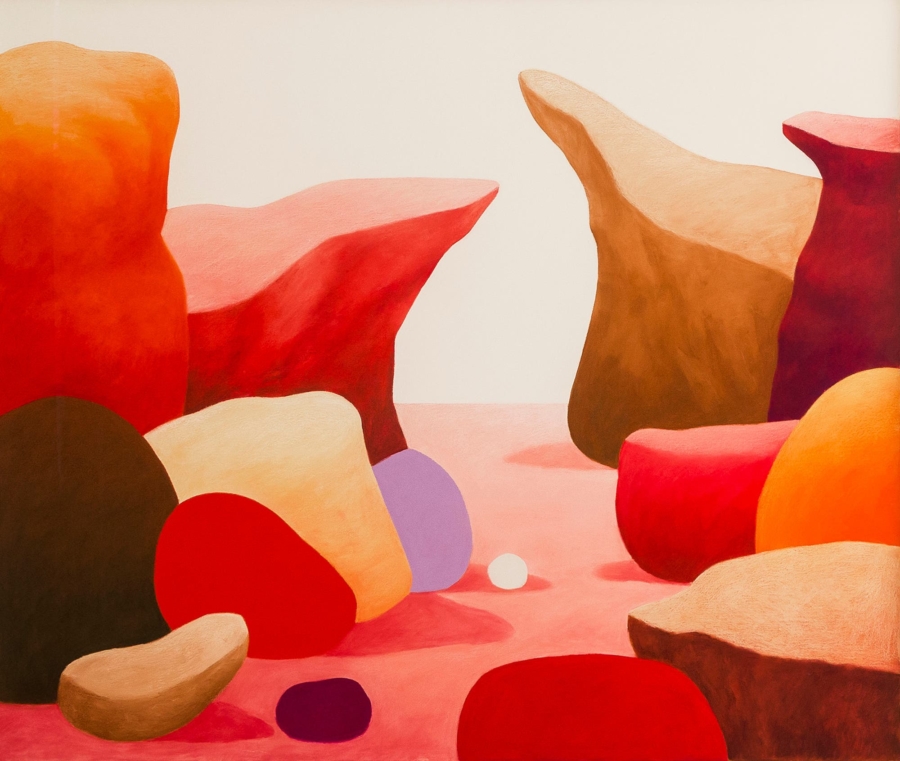June 27, 2021
Download as PDF
View on Nzz Bellevue

Nicolas Party, Rocks, 2014, Soft Pastel on linen, The Collection of Donald Porteus, © Nicolas Party (Image: Michael Wolchover)
The Swiss artist Nicolas Party (born 1980) paints, paints and paints. His paintings demand a fair amount of delighted astonishment from the viewer: due to their intensity of color, the exaggerated, lovely shapes in landscapes, as well as still lifes and touching portraits. If you look at his work, it is as if you were going on a dream trip – a wacky dream, to say the least.
The show is fantastic, surreal and yes, somehow at the same time dear. Although the title of the exhibition “Rovine”, which means something like ruin, suggests something shocking or mysterious: Everything that Nicolas Party represents is smoothly sanded, freed from hard edges and powerfully colored.
The colors pop, confuse and caress. Everything that is represented softly and lovingly in the design must face the power of the colors; they are uncompromisingly direct and generate resonances that are not just beautiful in the body. Imagine everyday life in such a force of colors. There would be no escape, no discreet drowning in the crowd.
When looking at his portraits and sculptures, feelings arise between sympathy and irritation. And you want to start an intensive exchange right away. The looks of his works are so demanding and piercing.
The strength of Party’s work in general lies in this area. They pretend to be lovely, but want for uncompromising confrontation.
The exhibition “Rovine” by the Swiss artist, who lives in New York, not only shows works from the past nine years, but also four large wall pastels that Party created for the exhibition. These are inspired by the Swiss painter Arnold Böcklin (1827-1901) – the painter of the famous island of the dead.
The visitor can look forward to a large retrospective that combines many years of work and shows some works that are still unknown. A sculpture that cannot be overlooked can also be seen in the Belvedere garden in front of the LAC.
This retrospective at Masi Lugano is a pleasure, in particular because Party intervenes in the existing architecture of the institution in its exhibitions and works with contrasting colors for the staging of its works. You enter a world that is fascinating and at the same time exuberant – and which will certainly provide material for distant dreams.



